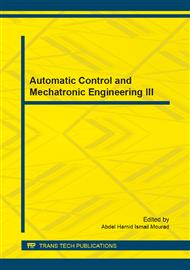p.52
p.58
p.66
p.74
p.80
p.84
p.88
p.93
p.103
Power System Transient Stability Assessment Based on Critical Cutset Transient Stability Available Capacity
Abstract:
Aiming at the disadvantages of converting traditional transient stability margin into power system control measures, this paper proposes a new transient stability margin characterization method based on critical cutset transient stability available capacity (TATC). Compared with traditional transient stability margin based on fault clearance time or transient energy function, TATC can directly reflects power system transient stability margin form the view of power which is more conducive for power system planning and operation personnel to grasp system transient stability state, at the same time, is also advantageous for prevention measures and emergency control measures to be developed directly according TATC. Simulation results based on IEEE50 machine 145 bus system show that the proposed TATC can effectively characterize power system transient stability margin.
Info:
Periodical:
Pages:
80-83
Citation:
Online since:
August 2014
Authors:
Price:
Сopyright:
© 2014 Trans Tech Publications Ltd. All Rights Reserved
Share:
Citation:


